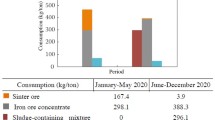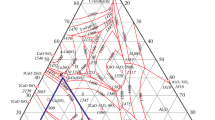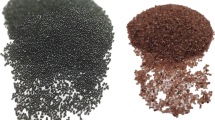The paper offers a market analysis and review related to secondary (recycled) garnet produced by recycling sludge using the waterjet cutting machines. Industrial quality garnet is a limited natural resource. The studies have shown that it is cost-effective to use recycling systems to process the post-waterjet cutting abrasive. A return on investment term was found to be 12 to 14 months, while the profit growth was 20–38%. It is forecasted that up to 15–40% growth in the fraction of recycled garnet used in the waterjet cutting process can be achieved. Arguably, after the abrasive recovery system is implemented, the abrasive-related costs are reduced by 60%. The garnet concentrate sludge can be recycled up to five times. Multiple service companies that offer recycling and recovery of the post-waterjet cutting sludge are being formed globally. Modern installations are capable of sustaining the production volume of up to 12,000 ton/year. A pilot model of the technological process for regenerating post-waterjet cutting garnet concentrate sludge using an electric mass classification technique has been developed. Pilot batches of abrasives for industrial use in waterjet cutting operations and for abrasive-jet machining have been produced. Industrial tests of the obtained 80 and 120 mesh sand samples and their mixture were carried out at the production facilities of the waterjet cutting users.






Similar content being viewed by others
References
Waterjet Cutting Machine Market by Product Type (3D, Micro, and Robotic), Application (Glass/Metal Art, Fiberglass Cutting, Foam Product Cutting), Industry (Automotive, Machine Manufacturing, Medical Devices), and Geography – Global Forecast to (2023), [Electronic resource]; URL: https://www.marketsandmarkets.com/.
Z. S. Gel’manova and A. V. Filatov, “Projects for making efficient use of factory wastes to reduce the load on the environment,” Metallurg, No. 9, 72–76 (2015).
A. D. Bardovskii, S. M. Gorbatyuk, S. V. Albul, and N. V. Gorbatyuk, “Optimization of the process flow diagrams for recycling mineral waste,” Metallurg, No. 4, 83–89 (2021).
S. N. Polyanskii, S. V. Butakov, and I. S. Olkov, “Resource saving technology for metal semifinished product surface treatment,” Metallurgist, 58, 1-2, 11–15 (2014).
N. S. Guo, H. Louis, G. Meier, and J. Olsen, “Recycling capacity of abrasives in abrasive waterjet cutting,” in: Proc. of the 11th Intern. Conf. on Jet Cutting Technology, Amsterdam, Scotland (1992), pp. 503–523.
Waterjet Abrasive Recycling can Slash Operating Costs, Modem Application News, May (2003); http://www.wardjet.com/articles/articlesslashoperatingcosts.html.
A. Perec, “Disintegration and recycling possibility of selected abrasives for water jet cutting,” Revista DYNA, 84, 203, 249–256 (2017); https://doi.org/10.15446/dyna.v84n203.62592.
M. Bishop, Reusing Waterjet Cutting Abrasive (2009), [Electronic resource]; URL: https://www.thefabricator.com/thefabricator/article/waterjetcutting/reusing-waterjet-cutting-abrasive.
J. Mestanek, et al., A Method for Recycling Abrasive Used for High-Pressure Waterjet Cutting from Cutting Sludge and an Equipment for Application of This Method, Patent EP 3,187,308; B 24 C 1/04; 05.07.2017, Bull. 2017/27.
L. Sobotová, M. Badida, and M. Karková, “Waste material recycling in abrasive water jet technologies,” Acta Mechanica Slovaca, 19, No. 4, 50–55 (2015).
D. Devis, The Reality Waterjet Abrasive Recycling, The Fabricator (2016). [Electronic resource]; URL: https://www.thefabricator.com/thefabricator/article/waterjetcutting/the-reality-of-waterjet-abrasive-recycling.
Get the Most Out of Your Waterjet Cutting System, Manufacturing News (2012), [Electronic resource]; URL: https://www.mfgnewsweb.com/archives/4/37465/Applying-Technology-dec12/Get-the-Most-Out-of-Your-Waterjet-Cutting-System.aspx.
Vatra Industries & Sheet Metal, [Electronic Resource]; URL: https://manitoba.canada-biz.org/.
Saudi Abrasives, [Electronic Resource]; URL: www.saudiabrasives.com.
Research and Production Company “Nanopowder Technologies” [Electronic Resource]; URL: www.nanopowdertechnology.com.
V. V. Zyryanov, D. V. Zyryanov, and I. V. Zyryanov, A Device for Extracting Dust from Powders, RF Patent No. 2376082, B07B 7/083, Appl. date: Feb. 20, 2008; Publ. date: Dec. 20, 2009; Bull. No. 35.
V. N. Tsytovich, “The development of physical ideas concerning the interaction of plasma flows and electrostatic fields in dusty plasmas,” Uspekhi Fizicheskikh Nauk (UFN), 177, 4, 427–472 (2007).
Hygienic Requirements for Limiting the Population Exposure to Natural Sources of Ionizing Radiation: Sanitary Rules and Regulations, Federal Center for Hygiene and Epidemiology of the Rospotrebnadzor, Moscow (2011).
S. V. Naumov, “Modern methods for determining the granulometric composition of the powdered components of welding materials,” Vest. Perm. Nat. Issled. Politekhn. Univ., Mashinostroyeniye, Materialovedeniye, 14, 1, 76–84 (2012).
W. Pabst and E. Gregorova, Characterization of Particles and Particle Systems, ICT, Prague (2007).
LLC Litmashpribor [Electronic Resource]; URL: www.uzlo.ru.
HORIBA Group of Companies [Electronic Resource]; URL: www.horiba.com.
J. Goldstein, Scanning Electron Microscopy and X-ray Microanalysis [in Russian], in 2 vol., translated from English, Mir, Moscow (1984).
F. L. Chen, E. Siores, K. Patel, and A. W. Member, “Minimizing particle contamination at abrasive waterjet machined surfaces by a nozzle oscillation technique,” Int. J. Mach. Tools Mf., 42, 13, 1385–1390 (2002).
S. N. Polyanskii, “Industrial equipment for waterjet cutting,” Vestn. Mashinostroyeniya, No. 5, 101–102 (2004).
Author information
Authors and Affiliations
Corresponding author
Additional information
Translated from Metallurg, Vol. 65, No. 8, pp. 88–96, August, 2021. Russian DOI 10.52351/00260827_2021_08_88.
Rights and permissions
About this article
Cite this article
Polyansky, S.N., Butakov, S.V., Ol’kov, I.S. et al. Waterjet Cutting of Semi-Finished Products with Use of Secondary Garnet at Stages of Metallurgical Processing. Metallurgist 65, 919–931 (2021). https://doi.org/10.1007/s11015-021-01229-3
Received:
Published:
Issue Date:
DOI: https://doi.org/10.1007/s11015-021-01229-3




